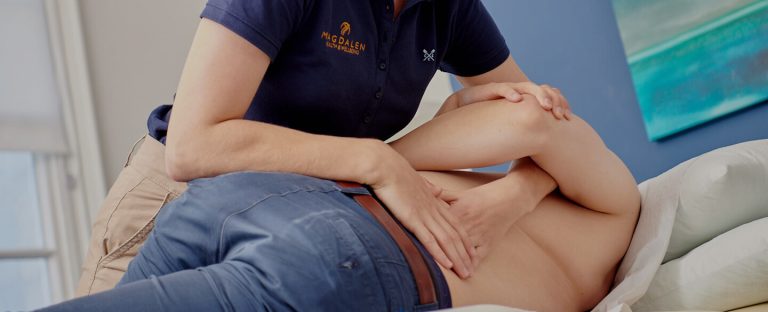

What do Osteopaths do?
Osteopaths main objective is to reduce your pain levels and allow you to move with optimum levels of joint movement and mobility. This is achieved by using a varying number of different techniques, which ones are used depends on the location of your pain, age, fitness and diagnosis. A wide range of soft tissue techniques, mobilisations and manipulations (the clicks that you may associate with clicking your knuckles).
What is the difference between chiropractor, osteopath and physio?
On a whole there is a lot of overlap between the 3. All of the therapies have a common goal which is to reduce pain and to improve function and mobility. How they get to this goal however is slightly different because of the different philosophies and approaches.
Osteopathy treats the whole body as one unit and looks at locating the cause of the pain rather than just giving symptomatic relief. Osteopaths as a whole have a large tool box of techniques to accommodate all types of restriction and tightness.
Chiropractors work primarily with the spine and tend to do more mobilisations than osteopaths with less soft tissue manipulation.
On the whole physiotherapists are least hands on as they have treatment methods such as ultrasound, laser and exercise prescription in their tool box.
All three professions give post treatment advice, treatment plan and also exercise prescriptions.
How long do the treatments last?
Initial consultations last between 45 minutes to an hour depending on who your practitioner is and follow up consultations last between 40-45 minutes.
Does treatment hurt?
The vast majority or techniques are painless, however, some soft tissue techniques may be slightly uncomfortable but this is usually short live. If anything is uncomfortable it is important to let us know straight away.
How many sessions will I need?
The number of sessions required is dependant on three specific case. The aim of osteopathy is to keep this to a minimum. Your osteopath should be able to tell you within a short period of time how many sessions this could potentially require (this number is not set in stone, and may change slightly based on your treatment response).
Do I need to be referred by my doctor?
You do not need to see a doctor before an osteopathy session if you are covering the cost of the session yourself. However, some insurance companies may require you to see a doctor prior to the session.
Can I claim for the cost of the appointment though private medical insurance?
Yes, most medical insurance companies cover for the cost of the osteopathy sessions and could cover for the course of the treatments required. You would need to check this prior to making the booking.
What is the training to become an osteopath?
The training is now a 4 year masters with years 3 and 4 being clinic based and patient fronting, whereas it was previously a 3 years BSC (Hons) Degree.
Is it a regulated profession?
Osteopathy is a protected title and it is an offence to use the title if you have not undergone the university degree, had 1,000 clinical hours as part of this training and also you have to be registered with the general osteopathic council (GOsC).
What are the side affects?
Post treatment reactions are not uncommon. A number of patients feel tender for one or 2 days following treatment, it is normal to feel quite tired after an osteopathy session.
Will I have to be clicked/manipulated?
Although this is a treatment approach that osteopaths are highly skilled in this is not their only option to improve movement, so if you are unhappy or it is not appropriate in your case other methods can be used.
Is osteopathy safe?
Osteopathy is very safe. A thorough case history and examination will be carried out, to ensure you are safe to treat and for us to know whether certain techniques need to be avoided.
What happens at an osteopath appointment?
You will be met at the door by our lovely receptionist Charlotte, who will bring you in and take your name and ask you to fill out a consent form and a medical history form. Your practitioner will then come and collect you from reception and take you to their treatment room, a thorough case history will be taken about the reason you have come to us and any medical history notes or previous injuries etc. A thorough examination will take place which helps to osteopath find out the cause of your discomfort, a treatment plan will then be discussed with you prior to starting treatment. Following the treatment a management and treatment plan will be discussed.
Do I need to bring anything?
You don’t need to bring anything, however an my medical notes/scan results or a prescription list could be beneficial and we can also put these onto your patient file for future reference.
What should I wear?
Anything you are comfortable in, loose baggy clothing/something that isn’t restrictive is the best.
Where can I park?
We do have onsite parking at Magdalen health, there is also Magdalen carpark opposite.
